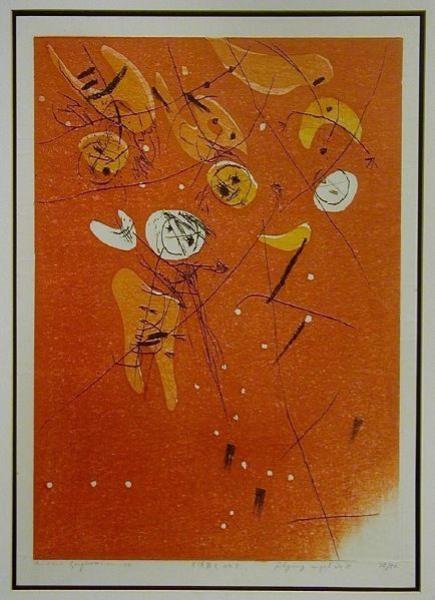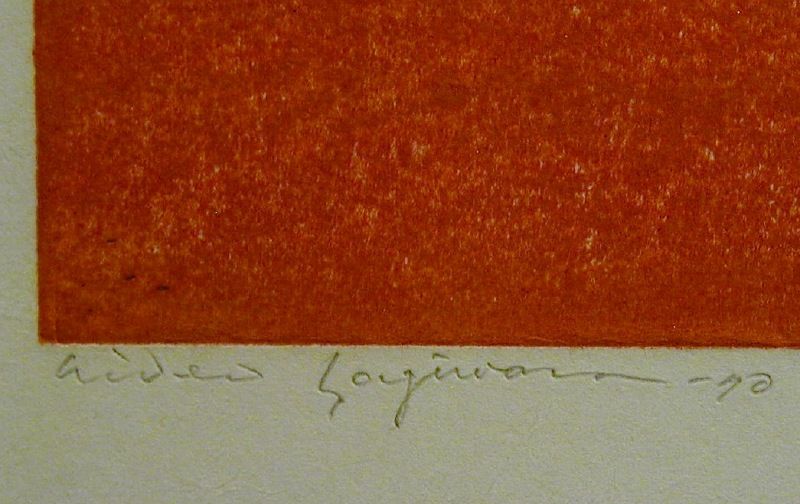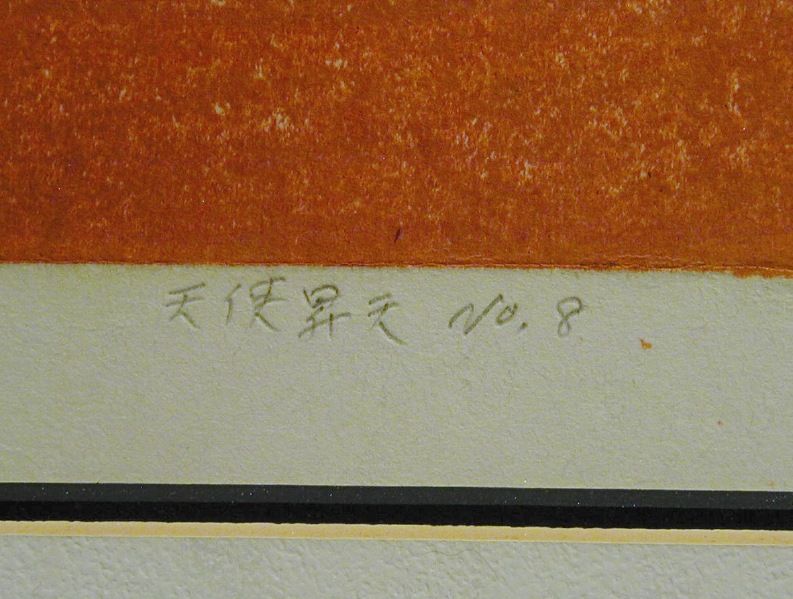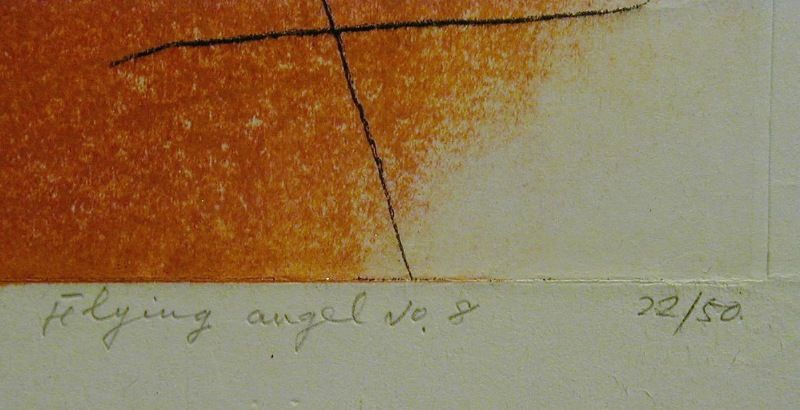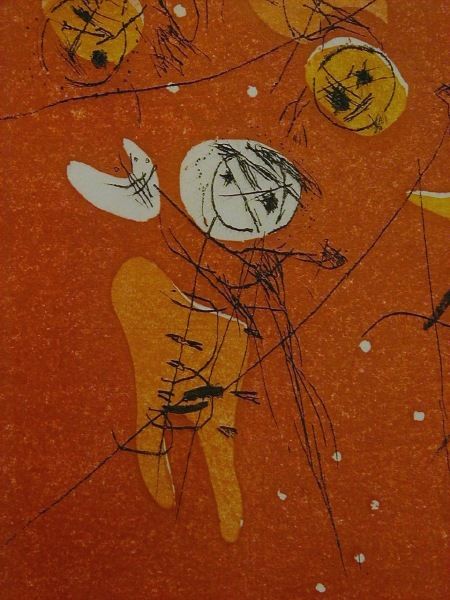| | |
| Artist: | Hagiwara Hideo (b. 1913) |
| Title: | Flying Angel, No. 8 |
| Series: | |
| Date of first edition?: | 1970 |
| Publisher (first edition)?: | Self |
| Publisher (this edition)?: | Self |
| Medium (first edition): | Woodblock |
| Medium (this edition): | Woodblock |
| Format (first edition): | Double Oban
|
| Format (this edition): | Double Oban |
| DB artwork code: | 34080 |
| Notes (first edition)?: |
|
| Notes (this edition)?: |
| The following information was taken from the original web listing of this artwork. Note that there may be some inaccuracies:
Hideo Hagiwara (Japanese, b. 1916)
Flying Angel, No. 8
1970
color woodcut and mixed media
#22 in an edition of 50
image: 24 1/2 x 17 inches
paper: approx. 30 x 19 1/2 inches
signed, dated, titled (Japanese and English)
and numbered in pencil, lower margin
very good condition
matted behind glass
needs reframing
provenance:
private collection, Los Angeles
Hideo Hagiwara was born in Yamanashi, Japan. He is the master of the art of Japanese contemporary wood block printing, and is one of most repected printers in the world. He won the "Prize in the International Biennale Lugano of Black and white" and many other international exhibitions. In 1983, he also received the "The Medal with Purple Ribbon" from the Japanese government for his devotion to development of the Japanese art. His work is seen in the world's leading museums as well as in private collections.
|
|
| Artist Bio: |
Hideo Hideo Hagiwara (萩原 英雄, 1913 – November 4, 2007) was a Japanese artist who worked mainly with woodblock prints. He was born in Kōfu, Yamanashi. Between 1921 and 1929 he lived in Korea and Manchuria. He studied at the Tokyo School of Fine Arts, where he graduated at the Oil Painting Section in 1938. While still there he attended Un'ichi Hiratsuka's extracurricular woodblock printing course, and in the same year he became quality controller at the Takamizawa Woodblock Print Company. He wasconscripted into the army in 1943. In 1945 he had lost his house, his atelier and nearly all his early works. Around 1950 he had sufficiently recovered to start painting again. At the same time he started making Sōsaku Hanga, both figurative and abstract prints. He was known as a constant innovator and he was generally considered one of the best post-WWII Sōsaku Hanga artists.
|
|


